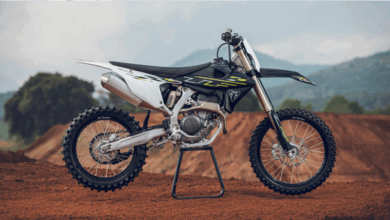3/14/2011-UTV design standards still under review
A second phase of voluntary design standards could be completed this year
Although it remains largely in the background, the possibility of federal involvement in the future design of UTVs continues to hang over the industry.
As a result, an industry group is working on a national level to find middle ground in what a federal agency would like to see from side-by-side design standards and what the industry believes is both consumer and manufacturer friendly.
The first phase of those efforts will be more apparent in coming months as dealers receive 2012 side-by-side models that have a label identifying them as compliant with voluntary design standards.
A second phase of those standards, which could include a couple of substantial changes, could be seen on 2014 models.
The substantial changes on the second phase probably will include a vehicle stability test — a first of its kind for off-road vehicles — and occupant retention standards. Both of these new components are being pushed by federal officials. The Consumer Product Safety Commission (CPSC) took a step toward issuing mandatory UTV standards in 2009 when it began looking at whether the vehicles pose an “unreasonable” risk of injury and death to the rider. At the time, the CPSC chairman said she believed the “CPSC can play a vital role in making them safer.”
While the CPSC continues to study the issue, it has not indicated whether it will proceed with issuing mandatory standards, said Paul Vitrano, the executive vice president for the Recreational Off-Highway Vehicle Association (ROHVA), a nonprofit group associated with the Motorcycle Industry Council.
“We haven’t heard of an intention (by the CPSC) to move forward with (mandatory standards) rule-making at this time,” said Vitrano, who worked on developing the first phase of the voluntary UTV standards through the American National Standards Institute (ANSI) and continues to work on the second phase of that project.
The latter phase includes a controversial vehicle stability test, which Vitrano said the CPSC has pushed for because the stability of UTVs, unlike ATVs, are less dependent on the rider. The controversy revolves around what type of surface such a test should be conducted on — pavement or off road. The latter, of course, would be extremely difficult to repeat in like tests, while the pavement option is not desirable to the industry, which believes side-by-sides will react much different to pavement than an off-road surface, which they have been designed for.
“While we continue to believe that any test that’s not on an off-highway surface is not indicative of true performance,” Vitrano said, “we’re willing to develop a test that would occur on a paved surface for the purpose of having some dynamic stability benchmark.”
After retaining outside experts to weigh the problem and then doing considerable testing, the ROHVA is advising the stability test be done on a circular track where a vehicle’s lateral acceleration can be measured, as well as any vehicle lift that may occur.
The other likely change coming to the second phase of the voluntary UTV standards would involve passenger retention. Here, ROHVA has proposed passenger retention efforts be matched to a rider’s body and how much mobility that part of the body needs in a working UTV.
“We wanted to address occupant retention while not being design restrictive,” Vitrano said. “We want to have performance requirements that the vehicles are supposed to meet, but leave it at the discretion of the manufacturer how they choose to address that component.”
Vitrano noted the ROHVA continues to work on gaining consensus with a number of affected parties on these voluntary standards and hopes the second phase of the standards can be finalized later this year.

